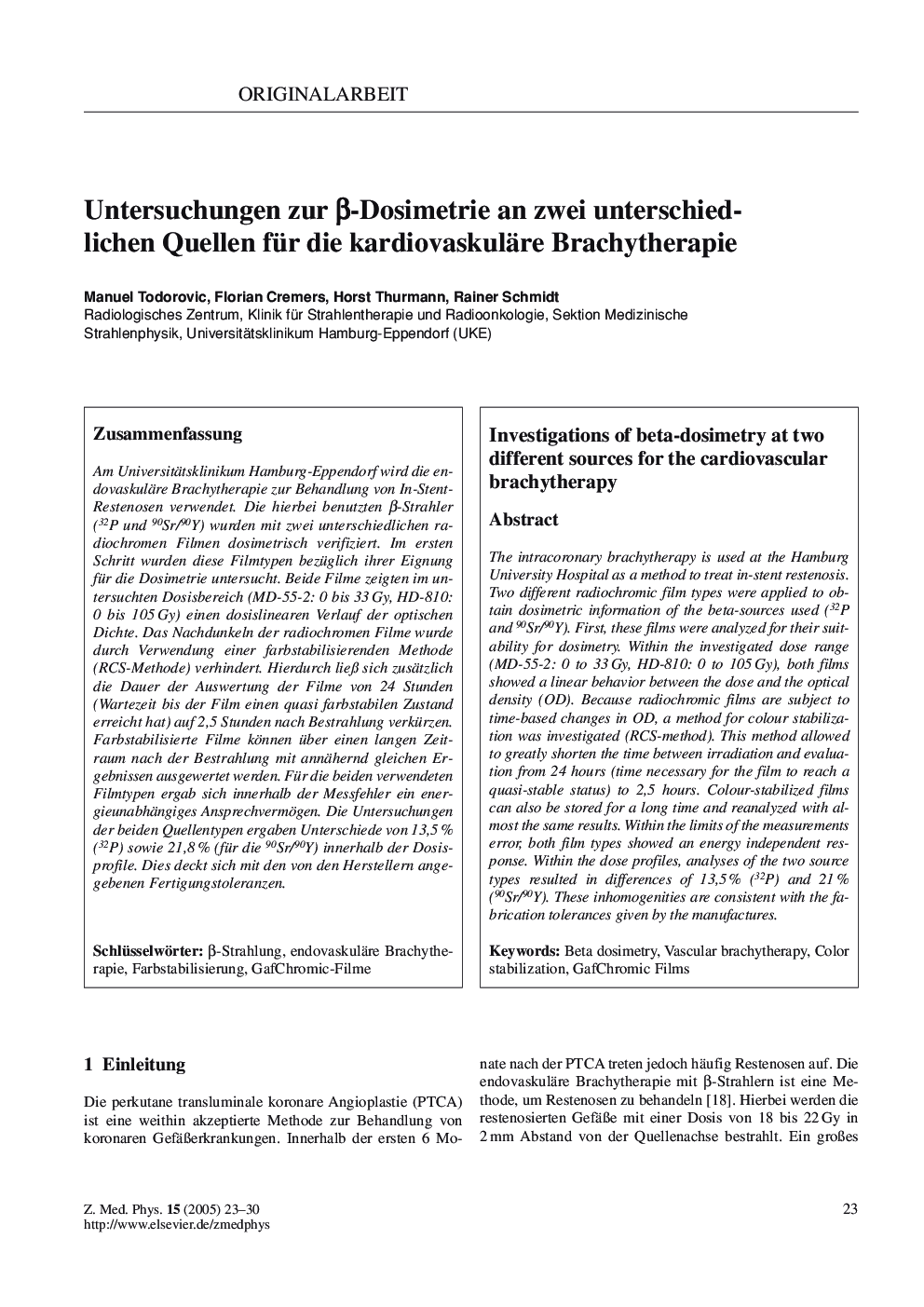| Article ID | Journal | Published Year | Pages | File Type |
|---|---|---|---|---|
| 10732704 | Zeitschrift für Medizinische Physik | 2005 | 8 Pages |
Abstract
The intracoronary brachytherapy is used at the Hamburg University Hospital as a method to treat in-stent restenosis. Two different radiochromic film types were applied to obtain dosimetric information of the beta-sources used (32P and 90Sr/90Y). First, these films were analyzed for their suitability for dosimetry. Within the investigated dose range (MD-55-2: 0 to 33Gy, HD-810: 0 to 105Gy), both films showed a linear behavior between the dose and the optical density (OD). Because radiochromic films are subject to time-based changes in OD, a method for colour stabilization was investigated (RCS-method). This method allowed to greatly shorten the time between irradiation and evaluation from 24 hours (time necessary for the film to reach a quasi-stable status) to 2,5 hours. Colour-stabilized films can also be stored for a long time and reanalyzed with almost the same results. Within the limits of the measurements error, both film types showed an energy independent response. Within the dose profiles, analyses of the two source types resulted in differences of 13,5% (32P) and 21% (90Sr/90Y). These inhomogenities are consistent with the fabrication tolerances given by the manufactures.
Related Topics
Physical Sciences and Engineering
Engineering
Biomedical Engineering
Authors
Manuel Todorovic, Florian Cremers, Horst Thurmann, Rainer Schmidt,
